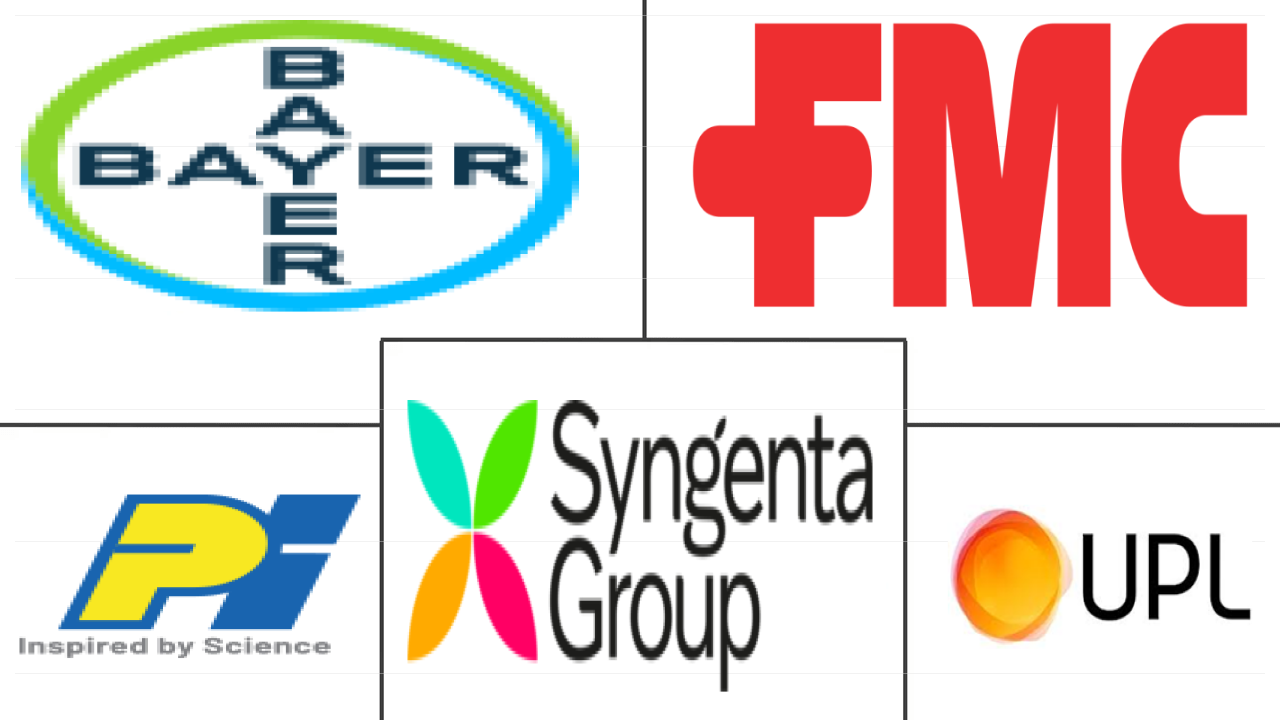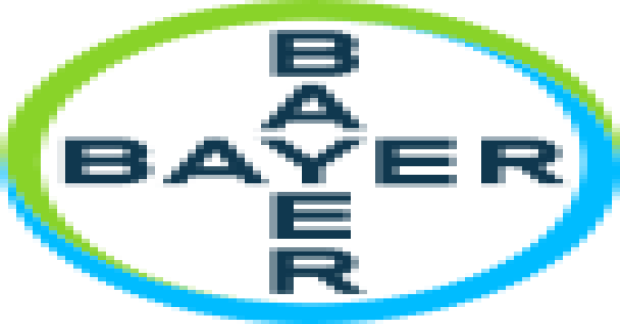Market Size of india seed treatment Industry
|
|
Study Period | 2017 - 2029 |
|
|
Market Size (2024) | USD 335.40 Million |
|
|
Market Size (2029) | USD 410.96 Million |
|
|
Largest Share by Function | Insecticide |
|
|
CAGR (2024 - 2029) | 4.15 % |
|
|
Fastest Growing by Function | Insecticide |
Major Players |
||

|
||
|
*Disclaimer: Major Players sorted in no particular order |
India Seed Treatment Market Analysis
The India Seed Treatment Market size is estimated at 335.40 million USD in 2024, and is expected to reach 410.96 million USD by 2029, growing at a CAGR of 4.15% during the forecast period (2024-2029).
335.40 Million
Market Size in 2024 (USD)
410.96 Million
Market Size in 2029 (USD)
3.34 %
CAGR (2017-2023)
4.15 %
CAGR (2024-2029)
Largest Segment by Function
89.94 %
value share, Insecticide, 2023
Insecticidal seed treatments are highly target-specific in controlling a range of pests, such as aphids, thrips, wireworms, and beetles, that attack seeds at the initial stages.
Fastest-Grwoing Segment by Function
4.17 %
Projected CAGR, Insecticide, 2024-2029
Insecticidal seed treatments are cost-effective as they require low application rates and can help reduce the reliance on foliar sprays in the later stages of the crop.
Largest Segment by Crop Type
44.39 %
value share, Grains & Cereals, 2023
Grains and cereals are susceptible to various pests that can affect the crop yield. For instance, rice in India is prone to an annual loss of 9.5% due to pests.
Leading Market Player 1
13.52 %
market share, Bayer AG, 2022

Bayer partnered with Oerth Bio with the aim of developing next-generation crop protection products based on Oerth Bio's innovative protein degradation technology.
Leading Market Player 2
12.65 %
market share, Syngenta Group, 2022

In 2019, the company expanded its R&D capabilities in Goa to help meet the expanding needs of the Indian crop protection chemicals market by innovating new solutions.
The market is driven by the growing need for advanced seed technologies and government support
- The Indian seed treatment market for chemical fungicides has experienced significant growth during the historical period due to the rising awareness about the importance of seed treatment in crop protection. Seed treatment is crucial in safeguarding seeds from fungal diseases, improving germination rates, and ensuring healthy plant establishment.
- Fungicides are the most important among seed treatment chemicals, and they accounted for a share of 9.0% in 2022. This is because the seeds and seedling stages of plants are more vulnerable to soil and seed-borne diseases.
- The insecticide segment in the seed treatment market was valued at USD 280.6 million in 2022. Active ingredients such as imidacloprid, clothianidin, thiamethoxam, fipronil, and chlorpyrifos are of high importance in chemical insecticide seed treatment.
- Farmers in the country are also looking to buy seeds that are pre-treated with these chemicals to ensure high quality and a maximum percentage of germination after sowing. The central government and several state governments are taking initiatives to make farmers aware of the use of seed treatment and enhance their motivation toward modern agricultural practices. For instance, the Government of Madhya Pradesh launched a spiral grader and seed treatment drum program to train the less-knowledgeable farmers in 1,000 villages and boost the cultivation of crops like soybeans.
- Root-knot nematode is the most dangerous among the nematode species that affect fruits and vegetable crops and is known to cause a yield loss of 34.0% in carrots, 26.0% in potatoes, 23.0% in tomatoes, 22.0% in the battleground, and 21.0% in brinjal. Nematicide seed treatment is most common in fruits and vegetable crops, and it accounted for a share of 9.1% in 2022.
India Seed Treatment Industry Segmentation
Fungicide, Insecticide, Nematicide are covered as segments by Function. Commercial Crops, Fruits & Vegetables, Grains & Cereals, Pulses & Oilseeds, Turf & Ornamental are covered as segments by Crop Type.
- The Indian seed treatment market for chemical fungicides has experienced significant growth during the historical period due to the rising awareness about the importance of seed treatment in crop protection. Seed treatment is crucial in safeguarding seeds from fungal diseases, improving germination rates, and ensuring healthy plant establishment.
- Fungicides are the most important among seed treatment chemicals, and they accounted for a share of 9.0% in 2022. This is because the seeds and seedling stages of plants are more vulnerable to soil and seed-borne diseases.
- The insecticide segment in the seed treatment market was valued at USD 280.6 million in 2022. Active ingredients such as imidacloprid, clothianidin, thiamethoxam, fipronil, and chlorpyrifos are of high importance in chemical insecticide seed treatment.
- Farmers in the country are also looking to buy seeds that are pre-treated with these chemicals to ensure high quality and a maximum percentage of germination after sowing. The central government and several state governments are taking initiatives to make farmers aware of the use of seed treatment and enhance their motivation toward modern agricultural practices. For instance, the Government of Madhya Pradesh launched a spiral grader and seed treatment drum program to train the less-knowledgeable farmers in 1,000 villages and boost the cultivation of crops like soybeans.
- Root-knot nematode is the most dangerous among the nematode species that affect fruits and vegetable crops and is known to cause a yield loss of 34.0% in carrots, 26.0% in potatoes, 23.0% in tomatoes, 22.0% in the battleground, and 21.0% in brinjal. Nematicide seed treatment is most common in fruits and vegetable crops, and it accounted for a share of 9.1% in 2022.
| Function | |
| Fungicide | |
| Insecticide | |
| Nematicide |
| Crop Type | |
| Commercial Crops | |
| Fruits & Vegetables | |
| Grains & Cereals | |
| Pulses & Oilseeds | |
| Turf & Ornamental |
India Seed Treatment Market Size Summary
The India Seed Treatment Market is experiencing a notable expansion, driven by the increasing awareness of the critical role seed treatment plays in crop protection. This market is characterized by the use of chemical fungicides and insecticides, which are essential in safeguarding seeds from fungal diseases and enhancing germination rates. The demand for pre-treated seeds is rising as farmers seek to ensure high-quality yields and maximize germination percentages. Government initiatives, such as training programs and campaigns to promote seed treatment, are further bolstering market growth. The market is moderately consolidated, with major players like Bayer AG, FMC Corporation, PI Industries, Syngenta Group, and UPL Limited leading the industry.
Seed treatment is vital for protecting crops from seed and soil-borne diseases and insect pests, which are significant challenges that can reduce crop yield. The use of seed treatment chemicals like cypermethrin, abamectin, and azoxystrobin is prevalent in India, addressing issues such as nematode damage and fungal infections. The stability in per-hectare consumption of seed treatment pesticides reflects advancements in technology and improved pest management practices. As agricultural activities expand, the necessity for effective crop protection measures, including seed treatment, becomes increasingly important. This trend is supported by regulatory encouragement and the efforts of various agricultural and governmental organizations to ensure comprehensive seed treatment across key crops.
India Seed Treatment Market Size - Table of Contents
-
1. MARKET SEGMENTATION (includes market size in Value in USD and Volume, Forecasts up to 2029 and analysis of growth prospects)
-
1.1 Function
-
1.1.1 Fungicide
-
1.1.2 Insecticide
-
1.1.3 Nematicide
-
-
1.2 Crop Type
-
1.2.1 Commercial Crops
-
1.2.2 Fruits & Vegetables
-
1.2.3 Grains & Cereals
-
1.2.4 Pulses & Oilseeds
-
1.2.5 Turf & Ornamental
-
-
India Seed Treatment Market Size FAQs
How big is the India Seed Treatment Market?
The India Seed Treatment Market size is expected to reach USD 335.40 million in 2024 and grow at a CAGR of 4.15% to reach USD 410.96 million by 2029.
What is the current India Seed Treatment Market size?
In 2024, the India Seed Treatment Market size is expected to reach USD 335.40 million.

